The last overseas trip I did before Covid 19 struck was to Nepal and over the years it has become firmly established as one of my favourite places in the world, so when Camps International offered the opportunity to return in February this year it was too good a chance to turn down. Nepal is obviously renowned for the Himalayas and the mountainous and rugged landscape is beautiful but there is so much more to it as a country to entice and entertain visitors. The Nepalese people are some of the warmest and friendliest people I have encountered anywhere on the globe and the connection to Britain maintained through the Gurkha regime is an added bond forged through adversity. The food is delicious and varied, the local specialties of Momos (stuffed, steamed dumplings) and Dahl Bhat (lentil curry with vegetables and pickles) are fantastic and there are beautiful sweet bananas and plenty of curry options readily available. Kathmandu is manic, dirty, dusty and crowded but it pulses with an energy that whilst verging on the manic is exhilarating and makes those moments of quiet,whether found in the wonderfully named Garden of Dreams or in a quiet, neighbourhood temple away from the hustle and bustle, all the more magic.
Our trip was a great combination of adventure and culture that showcased both sides of Nepal and packed a lot into a week. We spent our first morning climbing at the wall in Kathmandu where the students challenged themselves on inventive routes and practiced their bouldering skills. Our afternoon was spent a couple of hours outside Kathmandu hiking to the beautifully positioned Balthali Eco Resort perched on a hill in the countryside with great 360 degree views. The hike had a few challenging climbs and we crossed a number of suspension bridges hanging above spectacular gorges. It took us through local villages and fields planted with beans and potatoes. We stayed in the resort and the next day visited the local school where the students spent a great morning interacting with the local children and then in the afternoon took another trek through the villages of the local Tamang people and enjoyed some spectacular views as well as spotting Eagles and Monkeys en route. It was a great place to stay and provided an interesting insight into the traditional rhythms of life away from big city Kathmandu.
We hiked out the next morning and then spent the afternoon visiting Swayambhunath Temple which is better known as the Monkey Temple due to the number of Macaques who live on the site. It is a great spot perched high on a hill which gives a sense of just how vast the sprawl of the city is. The Monkeys provide endless entertainment and the Stupa is quite beautiful, it’s well worth a visit for any one in the area.
Our next adventurous activity saw us heading West out of the city along some of Nepal’s infamous roads to the Trisuli River where we undertook an afternoon of rafting. It was great fun with the balance between the excitement of the whitewater and the opportunity to chill and watch rural life from the river being perfectly met. Our return journey the next day was a little more challenging with a lot of congestion but we eventually made it back in time to explore some of Thamel old town. All good things must come to an end however and so it was with this trip. Our last day saw us spending the morning cycling through small town Nepal and in the afternoon we visited another magnificent stupa at Bhoudhanath. It is a truly huge stupa and the area is packed with pilgrims, tourists and shoppers. It is lively and interesting and a great place to pick up souvenirs and watch the ebb and flow of humanity in all it’s diversity.
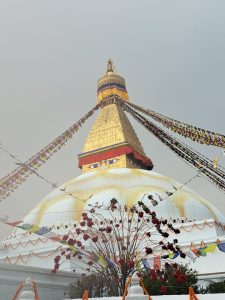
As ever Nepal did not disappoint and I have come away from this trip with a renewed love for this interesting, proud and beautiful nation and it’s warm, welcoming and friendly people. If you are interested in visiting Nepal yourself please don’t hesitate to get in touch and we can put together an itinerary for you that you will remember for the rest of your life!!

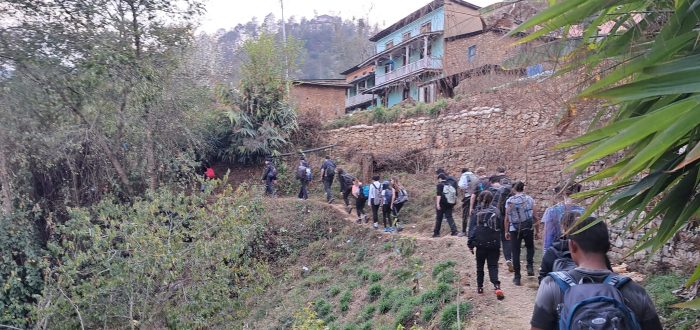
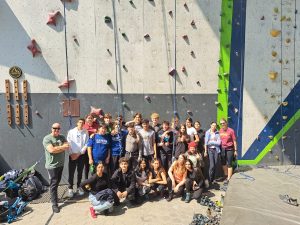
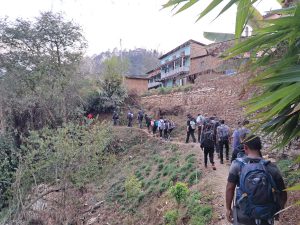
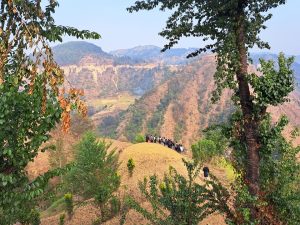
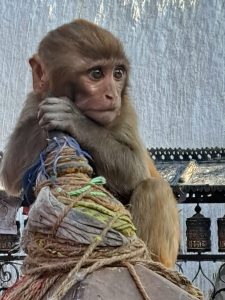
Amazing blog as always, you make every single place you visit worth adding to my list of places to go to!
Thank you for the kind words. I am glad you enjoyed reading the blog. Nepal is definitely one of my favourite places and well worth a visit!
Testimonials
Recent Posts
Categories
Recent Posts